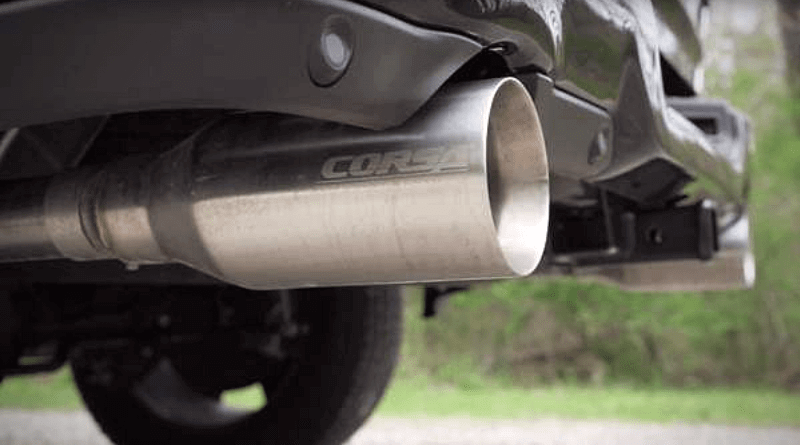
Auto Repair 101 - Engines & Exhaust
At a glance, your exhaust system seems like just a muffler and a tail pipe with smoke, right? In some ways yes, but that’s just the tip of the iceberg. Let’s deep dive into your vehicle's exhaust system.

Auto Repair 101 Series – Engines & Exhaust
Continuing our effort to educate Fridley drivers on how their car works, let’s turn our sights to the exhaust system on today’s modern vehicles.
If you mention car exhaust to someone, what comes to mind? Dirty, sooty, polluting smoke billowing out of a tail pipe. At the very least, you hold your breath and don’t inhale it. At worst, it creates a toxic smog that destroys your city and pollutes the environment.
As vehicles burn fuel, the engine expels exhaust that is harmful to human health and the environment. However, you may be surprised to learn that vehicle emissions are now 99% cleaner since the Environmental Protection Agency was granted control over regulating automobile emissions standards in 1970.
These regulations have spurred innovations such electronic engine controls, catalytic converters, and more to lessen the environmental impact of our cars and trucks and to even improve things such as gas mileage. Let’s look under the hood (or car) and see what makes up this system.
Anatomy of the Exhaust System

All internal combustion engines, whether gas or diesel, expend fuel to propel the vehicle forward. The byproduct of this spent fuel is a very hot gas comprised of carbon monoxide, sulfur dioxides, and other toxic substances. The purpose of the exhaust system is to safely expel this gas in the most efficient, environmentally friendly, and quietest manner possible.
It does this by forcing the gas through a maze of twisted pipes and filters until it is released through the tail pipe. Below are the major components that make up the anatomy of your vehicle’s exhaust system.
Pipes
That twisted, air tight maze of pipes is what carries the exhaust fumes. It is designed to remain as internal to the vehicle as possible while routing around the vehicle’s underside. The design also features a variety of bolted and welded unions so that specific sections of the system can be easily repaired or replaced as needed.
Exhaust manifold
Also known as the header, the manifold is a heavy-duty cast metal that precisely mates with each exhaust port on the engine. Gaskets made up of synthetic, heat resistant materials are sandwiched between each port and the manifold to make a tight seal and prevent any exhaust gases from leaking out. As the engine runs, gas is pushed out the exhaust ports, through the manifold, and down the exhaust pipes.
Catalytic Converters
Introduced in the 1970’s as part of the EPA’s emission standards, catalytic converters do the heavy lifting of filtering and removing the vast majority of toxins before they are released into the atmosphere. These expensive parts are comprised of platinum, palladium, and rhodium metals that chemically bond to the hydrocarbons and other toxins as the exhaust enters the converter. The remaining exhaust that passes through still contains toxins and pollutants but is below emission standards set by the EPA.
Mufflers & Resonators
The main purpose of a muffler is to reduce the sound made by the engine. You’ve probably heard a muffler that is either deficient in some way (e.g. a hole in it) or is missing altogether and the sounds is deafening. Made up of a series of chambers and synthetic materials, the exhaust gas passes through the muffler at a specific velocity to muffle the sound while still allowing for a quick and copmplete release of the exhaust.
Some vehicles use one or more components called a resonator, which can be thought of as a mini-muffler. Their purpose is to assist or even replace a muffler if there are unique decibel or space requirements.
Miscellaneous (hangers, gaskets, heat shields, flanges)
The remaining components of an exhaust system include a variety of accessories such as hangers that attach the pipes, gaskets that ensure tight seals, flanges that mate two parts together, and heat shields that protect areas of the vehicle from the high temperature exhaust gas.
Common Repairs Needed

If you live in Blaine, New Brighton, or one of the Twin Cities' many suburbs, you know our exhaust systems operate under very extreme constraints. The high temperature of the exhaust, it’s close proximity to the ground, high speeds, vibrations, and the corrosive mixture of salt and snow prevalent on our Twin Cities roads puts a constant beating on your vehicle exhaust system.
There are several ways you can tell when your car or truck has succumbed to these forces. The first is the smell of exhaust, which is due to a leak somewhere. If you can smell exhaust inside if your vehicle, it is critically important to have it inspected by a professional technician as the noxious gases can be fatal.
Sometimes, the components can simply wear out due to use. Catalytic converters, for example, have a finite lifespan before they stop filtering pollutants and start failing emissions tests. Replacing you air filter, fuel filter, and other routine maintenance can go a long way towards extending the exhaust system lifespan by catching harmful materials before they even reach it.
If your car or truck has an odd rattling noise, unusually strong exhaust smell, or simply too loud, chances there is an issue with your exhaust system. Don’t hesitate to call the professionals at Bona Bros. to give you a fair assessment of your vehicle so you can continue to drive safely.
